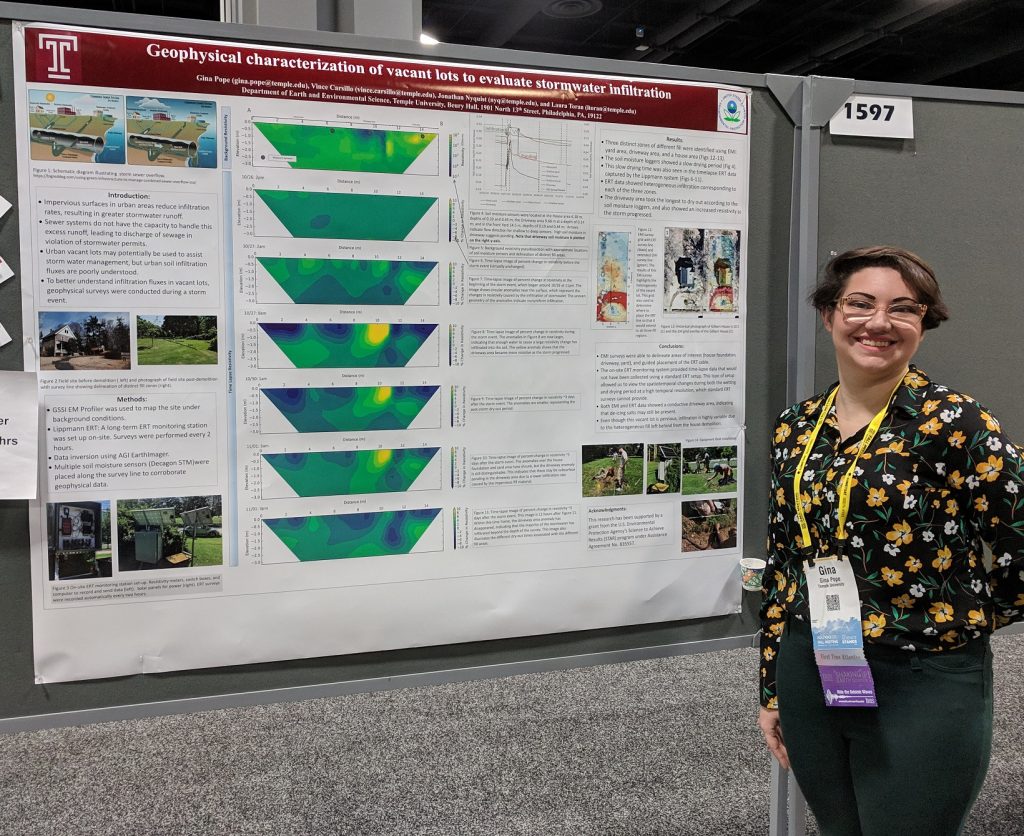My student, Gina Pope presented a poster at AGU that garnered a lot of traffic (see my November post for the abstract). Apparently, there are quite a few research groups actively pursing time-lapse electrical resistivity tomography (ERT) for monitoring rain water infiltration. This is not a new concept, but the emergence of low-cost ERT systems has rejuvenated interest.
Gina’s research is focused on stormwater infiltration at urban sites and within stormwater control measures such as bioswales. The site discussed in her poster is a vacant lot on the Temple Ambler campus that was the site of the Gilbert House, which we are using as a research surrogate for the 40,000+ vacant lots in Philadelphia. A surprising discovery was that the response to rain events is an increase in resistivity where the driveway used to be, and a decrease in resistivity elsewhere. Rain increases saturation, so one might expect resistivity to decrease, but the background resistivity is especially low where there driveway was located, perhaps because of residual road salt, so there the flushing of saline porewater by dilute rainwater has a larger affect than the increase in saturation, so the resistivity goes up when it rains!
A press release on Gina’s research can be found here.

